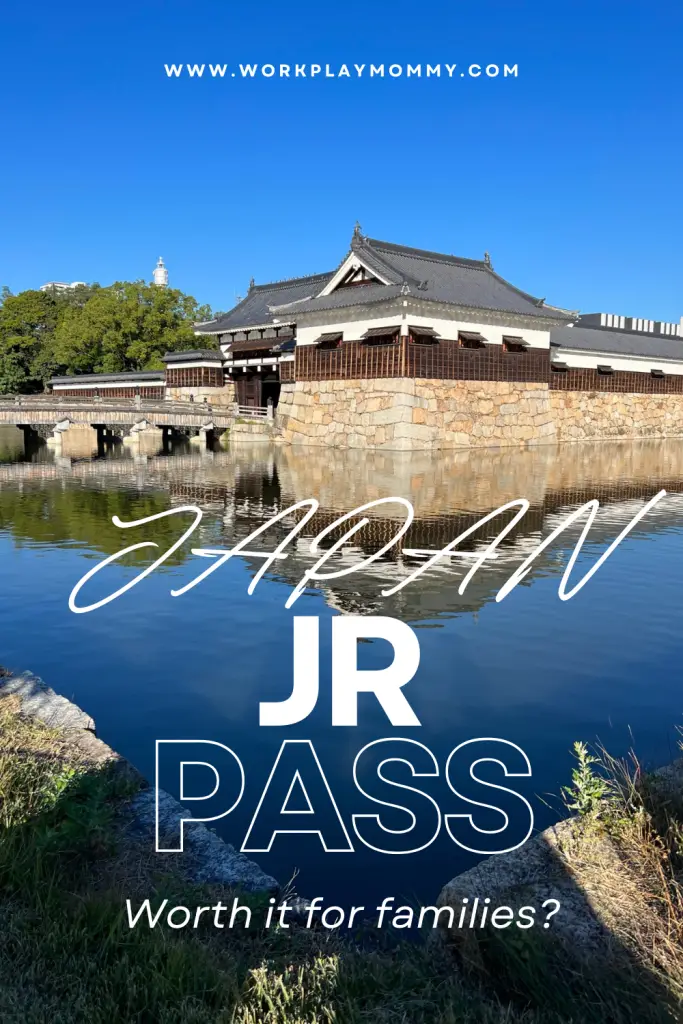Plus Our 7 day JR Pass Itinerary with kids
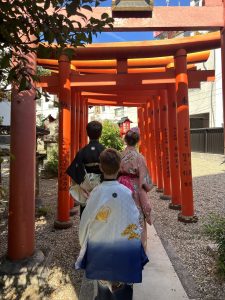
Is the JR Pass worth it with kids? Check out this guide to the JR Pass, whether it is worth it for families, and tips for using it along the way.
What is the JR Pass?
The Japan Rail Pass (JR Pass) is a special ticket available to foreign tourists for traveling within Japan on the extensive JR (Japan Rail) network. This pass allows unlimited use of most JR trains, including the iconic Shinkansen (bullet trains).
You can even upgrade your JR Passes to include local, express, and limited express trains. The JR Pass even covers some buses and ferries under the JR Group.
As a whole, the JR Pass provides exceptional convenience, cost savings, and flexibility for travelers exploring Japan. This is especially true if you are a traveler who needs some grace in their travel plans such as someone traveling with small children!
Purchasing a JR Pass for our family made seeing the best of Japan and the most popular sites so easy. We didn’t have to navigate with a car or taxi, and we found that several other perks were included.
However, it is important to know that not everyone is eligible to purchase a JR Rail Pass.
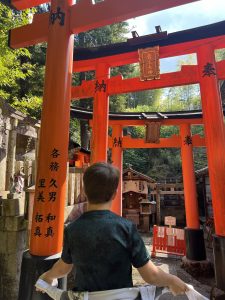
Who can purchase a JR Rail Pass?
JR Rail Passes are only available to certain groups of people. For the most part, residents and citizens of Japan are not allowed to purchase them.
If you meet the minimum criteria for purchasing a pass, you must purchase the pass before entering the country and exchange it at a voucher exchange center.
Don’t expect to walk up at the JR station and collect a 2 week JR Pass.
Eligibility for JR Pass: To Receive a JR Pass, You Must…:
Enter Japan under Tourist Status: To be eligible for a JR Pass, you must be a foreign tourist visiting Japan under the “Temporary Visitor” visa status. Japanese citizens, as well as foreign residents in Japan, are not eligible for this pass.
Plan Travel for a Short-Term Stay: The JR Pass is designed for travelers with short-term stays, typically ranging from 7 to 21 consecutive days, although a few variations may be available.
Purchase the Pass Outside of Japan: You must obtain the JR Pass before arriving in Japan. It is not available for purchase within the country.
Exchange the Voucher: After purchasing the pass, you will receive an exchange order (voucher) that you must exchange for the actual pass upon arrival in Japan at specific JR exchange counters, airports, or designated locations.
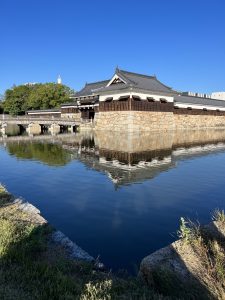
How to exchange your JR Rail Pass Voucher:
After you order and receive your JR Rail Pass Voucher outside of Japan, you must then exchange it inside the country.
The voucher can be exchanged at any major JR station as well as Haneda and Narita airports.
The exchange is simple enough –simply get in line and present your voucher. However, the queues can be quite long. In fact, our family waited over an hour in line at the Haneda airport to exchange our voucher.
While we were upset to lose so much time, and we were jet-lagged. The airport exchange center is also a great place to buy your Welcome Suica, another must-have for transportation for visitors in Japan.
(A Welcome Suica is a short-term travel fare card that allows you access to local trains, buses, and other transportation necessary for local travel. The Welcome Suica does not need a deposit and is only available to travelers for 30 days. You will need both a JR Pass and a Suica to navigate most of Japan.)
When you exchange your voucher, the lovely staff at the exchange office are a wealth of information. However, they do expect you to be prepared to answer several questions and present paperwork.
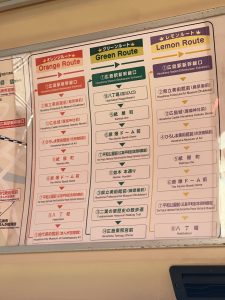
- You need to know your travel dates to exchange your voucher: While you do not need to know your travel dates when you purchase your voucher, you do need to know your travel dates when you exchange your voucher.
- Once you choose your initial activation date, you cannot change it. Our family made detailed train plans in advance so that we knew what days we were going to use the pass. You do not have to have an activation date that coincides with your exchange day.
- You must present your passport. To exchange your voucher, you must also present your passport. Have both your voucher and your documents ready to be reviewed by the JR staff. In our case, I was able to present passports for my entire family without them being present.
- Other items are available for purchase at the JR exchange center. When you present yourself for exchange, this is the time to ask questions! I could book tourist excursions or special train passes at the exchange center. Plus, I was able to receive my Welcome Suica at the exchange office instead of also joining the queue for the Welcome Suica vending machine.
While the exchange line was long and the process somewhat tedious, we were so glad that we did it as soon as we landed and had our paperwork in order for our family.
However, is the JR Rail Pass good for your and your family?
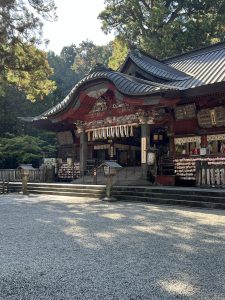
Is the JR Rail Pass Good for Families Traveling in Japan with Children?
The JR Pass is a cost-effective and highly recommended option for foreign tourists looking to explore Japan’s various regions. It offers unlimited travel within the validity period. Therefore, it is an excellent choice for visitors planning to travel extensively during their short-term stay.
Over the course of our 2-week trip in Japan, our family spent 7 days traveling to different regions of Japan. We were able to see some of Japan’s top sites and most important historical monuments. Throughout, the JR Rail Pass saved us tons of money and headache!
Here is why the JR Rail Pass was right for us!
- Cost-Effective: Japan can be an expensive destination, especially when traveling with a family. The JR Pass offers significant cost savings compared to purchasing individual tickets. For the price of a round-trip Shinkansen journey between Tokyo and Kyoto, you can have a 7-day JR Pass and explore multiple cities during your stay.
2. Convenient: With a JR Pass, you won’t need to worry about purchasing tickets for each leg of your journey in advance. It provides flexibility and ease of use, making it convenient for families.
And if you miss your train, you haven’t lost the fare. For example, our family missed our scheduled train one day, and with the JR Rail Pass, we were simply able to rebook rather than losing the cost of the train ticket.
3. Unlimited Travel: The pass allows unlimited travel within the validity period, which means you can explore multiple cities and regions without additional costs. This is particularly beneficial for families who want to experience the diverse landscapes, cultures, and attractions Japan has to offer.
You could choose to stay at a different city each day, visit multiple sites, or even operate with a home base like we did.
Unlimited travel was good for our family because we stayed in a central location and traveled out to other cities each day. Therefore, we had both a departure and return ticket everyday.
Many people we met used the JR Pass to go to a new city each day or every other day, but we had a departure and return ticket for each day. Unlimited travel made our plans much more affordable and kept us from having to lug suitcases with our children each day.

4. Coverage: The JR Pass is valid on JR Group trains throughout the country, including the Shinkansen, some local and express trains, and even some buses and ferries. This comprehensive coverage ensures you can access remote or less touristy areas, making your family’s journey more enriching.
To our pleasant surprise, our JR Rail Pass included our trip to Hiroshima, a JR tour bus when we arrived, and even the ferry to Miyajima Island to see the Itsukushima Shrine (floating Torii gate).
However, the basic pass does not include the express trains or the specialty trains (Hello Kitty, Pokemon, etc.). You can upgrade your pass to include the Nozomi or specialty lines.
5. Child-Friendly: Japan is known for its child-friendliness, and the JR Pass aligns with this. Kids under six years old usually travel for free or at a significantly reduced rate, making it even more budget-friendly for families.
However, note that your under-6-year-old is not eligible for a seat if you do not purchase a ticket. Therefore, on busy trains or full cars, your child will have to sit on your lap.
Our 4-year-old sat just fine on our laps in the comfortable JR seats. The seats were about twice as wide as a plane seat and very clean. However, if you prefer for your child to have his or her own seat, then you will have to purchase a child’s ticket for your under 6 year old.
6. Stress-Free Travel: One of the most stressful things about travel can be transportation, parking, and transfers. The JR Pass simplifies the logistics of traveling in Japan.
While the ticket machines require a bit of a learning curve, once you master them, you don’t have to worry about long queues or language barriers. You can focus on enjoying your trip while moving seamlessly between destinations.
7. Efficiency: Japan’s rail network is renowned for its punctuality and efficiency. Trains are clean, comfortable, and well-maintained, ensuring a pleasant travel experience for your family. This is especially important when traveling with children.
In fact, we found the train rides to be quite relaxing even traveling with 3 kids.
8. Scenic, Beautiful Vistas: Japan’s landscapes are diverse and breathtaking. With the JR Pass, you can experience picturesque countryside, scenic coastlines, and stunning mountain ranges through the window of a comfortable train.
Riding the JR lines is a sightseeing tour within your journey. You will see and explore parts of Japan you would never otherwise see from the road or the air.
9. Cultural Experience: Riding the Shinkansen and other Japanese trains is a cultural experience in itself. It allows your family to interact with locals, observe Japanese customs, and witness the country’s strong work ethic and dedication to service.
For example, trains and most public transportation in Japan can be very crowded. Despite the pressing crowds, the trains remain very quiet. It is impolite to hold loud conversations or talk on your cellphone on trains.
10. Flexibility: The JR Pass offers different validity periods (7, 14, or 21 days), allowing you to choose the option that suits your family’s travel plans. Whether it’s a short stay or an extended vacation, there’s a pass that fits your needs.
Further, the JR Pass offers different types of passes. You could purchase only a regional pass if you plan to stay in a concentrated area. Or, if you want to ride the specialized or express trains, such as the Nozomi, you can upgrade your pass for an extra special experience!
In conclusion, the Japan Rail Pass is a worthwhile investment for a traveling family in Japan. It not only offers significant cost savings but also simplifies your journey, allowing you to explore the country with convenience, flexibility, and ease. With the pass, your family can immerse in the beauty, culture, and hospitality of Japan, creating lasting memories of your visit.

RELATED POST: Tokyo Disney Celebration Hotel Review: Tokyo Disney’s Budget Option for Families
How to know if the JR Pass is Worth the Cost
A Japan Rail Pass (JR Pass) is worth it in several scenarios, but it may not be the most cost-effective option for all travelers. Here’s when it’s worth it and when you might not get your money’s worth:
When the JR Pass is Worth the Money
- Frequent Long-Distance Travel: If you plan to travel extensively across Japan, especially between major cities like Tokyo, Kyoto, Osaka, Hiroshima, and Sapporo, the JR Pass can result in significant savings. The Shinkansen fares for multiple long-distance trips can quickly surpass the cost of the pass.
2. High-Speed Rail (Shinkansen) Travel: The JR Pass provides unlimited access to Shinkansen, which is great if you intend to make several high-speed rail journeys. A single round-trip on a Shinkansen can often cost more than the JR Pass itself.
If you plan to only use local transportation (within Tokyo for example), then this pass might not be worth purchasing.
3. Traveling in a Short Time Frame: If you’re visiting Japan for a concentrated period (e.g., one or two weeks), the JR Pass can be particularly cost-effective. It allows you to make the most of your pass during the valid period.
4. Exploring Multiple Regions: If your itinerary involves exploring various regions, including rural and less touristy areas, the JR Pass’s comprehensive coverage comes in handy. It covers most JR lines, providing easy access to both popular and off-the-beaten-path destinations.
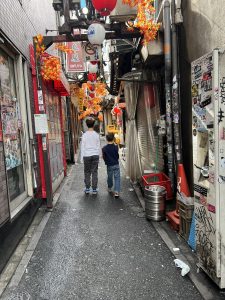
When the JR Pass Might Not Be Worth It:
- Limited Travel: If you plan to stay in a single city or region and won’t be making many long-distance journeys, purchasing individual tickets or using local transport cards might be more economical. The JR Pass is best for travelers covering substantial distances.
2. Short Stay in Japan: For short trips of less than a week, the JR Pass might not offer the best value. Consider the length of your stay and whether you’ll be traveling enough to justify the pass’s cost.
3. Not Utilizing Shinkansen: If you’re not planning to use the Shinkansen and will rely primarily on local trains or buses, the JR Pass might not be as cost-effective, as it’s the Shinkansen journeys where the pass offers the most savings.
4. Traveling During Peak Seasons: Be aware that Japan can be crowded during peak travel seasons, such as cherry blossom season or Golden Week. If you anticipate difficulty getting reservations on popular Shinkansen routes, it may affect the convenience and value of the JR Pass.
In summary, the JR Pass is worth it for travelers who plan to explore Japan extensively, frequently use high-speed trains, and intend to visit multiple regions.
However, if your travel plans are limited in terms of distance, duration, or use of the Shinkansen, you might not get your money’s worth, and other ticketing options may be more suitable. It’s essential to assess your itinerary and transportation needs to determine whether the JR Pass is the best choice for your specific travel circumstances.
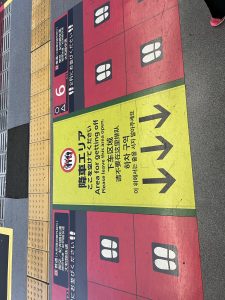
JR Rail Pass Green Car:
Our family often uses upgraded transportation as a way to make travel with kids more comfortable and convenient. Therefore, we were quite torn when deciding whether to book a regular JR Rail Pass or a Green Car (upgraded) pass.
What are the perks of a Green Car Pass on the JR Rail?
- Comfort: The Green Car provides a more spacious and luxurious seating arrangement, typically with wider, more comfortable seats. Passengers enjoy extra legroom, which can be especially appealing on longer journeys.
- Privacy: The Green Car tends to be quieter and less crowded, offering a peaceful atmosphere for work or relaxation. This can be advantageous for business travelers who need a quiet space to concentrate.
- Amenities: Some Green Cars offer added amenities like power outlets, reading lamps, and tray tables. These can enhance the passenger experience, making it more convenient for work or leisure.
- Reservations: Green Car pass holders must have reservations for their seats, which can be beneficial during peak travel times, minimizing stress and uncertainty.
However, compare those benefits to a standard ticket.
Standard Ticket:
- Cost-Effective: Standard tickets are significantly cheaper than Green Car tickets. For travelers on a budget or those who do not require the extra comfort and amenities, standard tickets are a more economical choice.
- Comfort: All JR Rail cars, including standard ones, are generally clean, neat, and comfortable. They provide a high level of passenger satisfaction, making them suitable for most travelers. Every train we took was immaculate with wide comfortable seats.
- Availability: Standard cars have more seats than Green Cars, making it easier to find available seating without a reservation. In some instances the Green Cars were already full when we made our reservation.

Standard Pass vs. Green Car Pass Winner
In the end, while the JR Rail Pass Green Car offers enhanced comfort, amenities, and the convenience of reservations, the standard pass won for us.
The Green Car is an attractive option for business travelers or those who value a quieter and more exclusive experience. But may offer little value to families who are less concerned about quiet.
It’s important to note that all JR Rail cars are clean, well-maintained, and comfortable, ensuring a pleasant journey for most passengers.
It was also important to us that most standard cars are configured in a 3-2 seating pattern, but Green Car seating is usually 2-2. For us, the 3-2 was important so that none of us had to sit alone.
Given the significant price difference between Green Car and standard tickets, it’s crucial to weigh the extra cost against the specific needs and preferences of your trip.
For many travelers, especially those on a tight budget, the standard ticket may offer an excellent balance of comfort and affordability, making it a more practical choice. And, for our family, that values comfortable and convenient transportation options, even the standard ticket exceeded expectations.
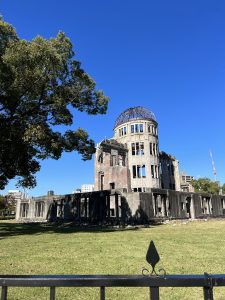
JR Pass tips to know before you travel.
Ordering your JR Pass and using your JR pass are 2 different beasts entirely. It can be quite overwhelming to use the pass in a crowded station, so here are some tips that we learned over the course of our trip.
- You can make reservations really means that you should make reservations. In our research, we kept reading that reservations were optional with standard tickets. However, we found that many routes filled up, and seats could be difficult to find together. Therefore, we recommend that you make reservations rather than just hoping to fit onto an unreserved car.
2. You will need your passports…all the time. Each time you make a reservation or travel, you must enter your passport number, and the agents reserve the right to review your travel documents.
Therefore, we had to keep our passports on us at all times. Thankfully, I purchased this convenient sling bag before we traveled. It has a sleek, hidden compartment at the back that is perfect for our family passport holder.
3. You can’t hold two reservations to the same destination at the same time. If you happen to miss your train, don’t worry, you can still use your pass. However, you will have to go to the station office and ask them to change your reservation.
4. Your pass cannot be replaced if lost, stolen, or destroyed even if you have your original voucher and receipt. No ifs, ands, or buts about it. Regardless of whether you have your voucher, your receipt, or even an image of your ticket, if you lose your JR Pass, you must purchase another.
This issue is further compounded by the fact that the JR Rail Pass is quite small and flimsy. Easily lost, mixed with other tickets, or maimed while traveling, the pass does not stand out as special.
Therefore, I further recommend that you travel with something to keep your passes organized.
5. Take a lanyard for your passes to keep them organized and safe. At any given time, I was holding as many as 15 train tickets with the 5 JR Pass Tickets for our family of 5. Keeping them together and organized was really difficult. If I had purchased a lanyard at the outset, then my life would have been easier.
As an alternative, I also recommend one of these family passport holders that has not only a place for each of your family’s passports but also slots for money, cards, and tickets. I kept each of our trips organized in this case.
JR Pass = Worth it for families traveling in Japan!
In sum, our JR Pass gave us the flexibility and freedom to see more of Japan than we thought possible in a short time.
Our children experienced the beauty of the Japanese highlands, the modern history of Japan in Hiroshima, and the raging success of Japanese animated characters in Osaka!
With the benefit of unlimited travel under the JR Pass, we were not forced to pack up and move our belongings each day on the trains. Instead, we spent long days traveling from our home base and back experiencing as much as we could between our departure and return trip.
I highly recommend the JR Pass for any family wanting to make traveling with kids in Japan a little more convenient.
If you want to know exactly how we used our JR Pass to see much of Japan, check out our itinerary below:
Our 7 Day JR Pass Itinerary with Kids
Our family spent a little over two weeks in Japan exploring and visiting some friends. We knew that we would spend nearly an entire week in Tokyo, so we only purchased the JR Pass for 7 days.
Tokyo uses predominantly local trains and buses that are not covered under the JR Pass.
Regardless, we spent an additional week staying in Nagoya –a convenient central city for visiting some of Japan’s most famous cities.
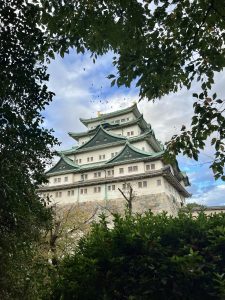
Day One: Tokyo to Nagoya
On our first day of the JR Pass, our family traveled from Tokyo to Nagoya. The train traveled from Tokyo station to Nagoya station, and we navigated local trains to our Airbnb.
Day Two: Nagoya
Day Three: Nagoya

Day Three: Hiroshima
After spending 2 days exploring Nagoya, our family traveled from Nagoya station to Hiroshima. This was easily one of the best uses of the JR Pass because the JR Pass gets access to the local sightseeing bus and even the ferry around the floating Torii Gate.
On this day, we used the JR Pass for the departure and return ticket to and from Hiroshima, the sightseeing bus, and the ferry. These uses alone paid for our tickets.
Day Five: Osaka
Our family traveled from Nagoya to Osaka and back with the JR Pass. While this is a relatively short train ride, we found yet more JR Pass benefits.
Not only can you take the train into Osaka station, JR Pass grants you access to local trains if you are traveling to Universal station. Our family spent a day exploring Universal Studios Japan and the new Super Mario World. The added bonus of using the JR Pass to reach the park was yet another cost savings for us.
Beware, this was likely the most crowded train we rode in Japan!
Day Six: Kyoto
The next day we took the train from Nagoya to Kyoto and back. We walked the Inari Shrine walk to the peak of Mt. Inari and experienced the beautiful bamboo forest.
The JR Pass delivers you to Kyoto, and a train ride to Inari station, delivers you directly to the entrance of the Inari Shrine walk. The Inari Shrine walk was easily one of our favorite Japan experiences as a family.
Day Seven: Fuji
Finally, on our last day of the pass, we traveled from Nagoya to Fuji. We traveled to Shin Yokohama and Hachioji then took local trains to reach our onsen stay.
This route was a little complicated, but the JapanTravel app got us there with no problems! Be sure to download the JapanTravel App before you arrive in Japan to make travel in Japan super simple!
